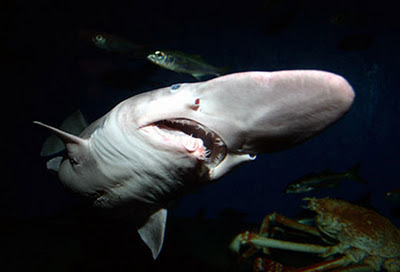As Wiki says,
I normally do not like reptiles in any form. Many does not. No wonder, I find this one ugdorable :P
Horned lizards are a genus (Phrynosoma) of lizards which are the type genus of the family Phrynosomatidae. The horned lizard is popularly called a "horned toad", "horny toad" or "horned frog", yet it is neither a toad nor a frog.One interesting about this one is that, Horned lizards use a wide variety of means to avoid predation. Their coloration generally serves as camouflage. When threatened, their first defense is to remain still to avoid detection. If approached too closely, they generally run in short bursts and stop abruptly to confuse the predator's visual acuity. If this fails, they puff up their bodies to cause them to appear more horned and larger, so more difficult to swallow.
I normally do not like reptiles in any form. Many does not. No wonder, I find this one ugdorable :P
Ugly Animals - Horned Lizards













































